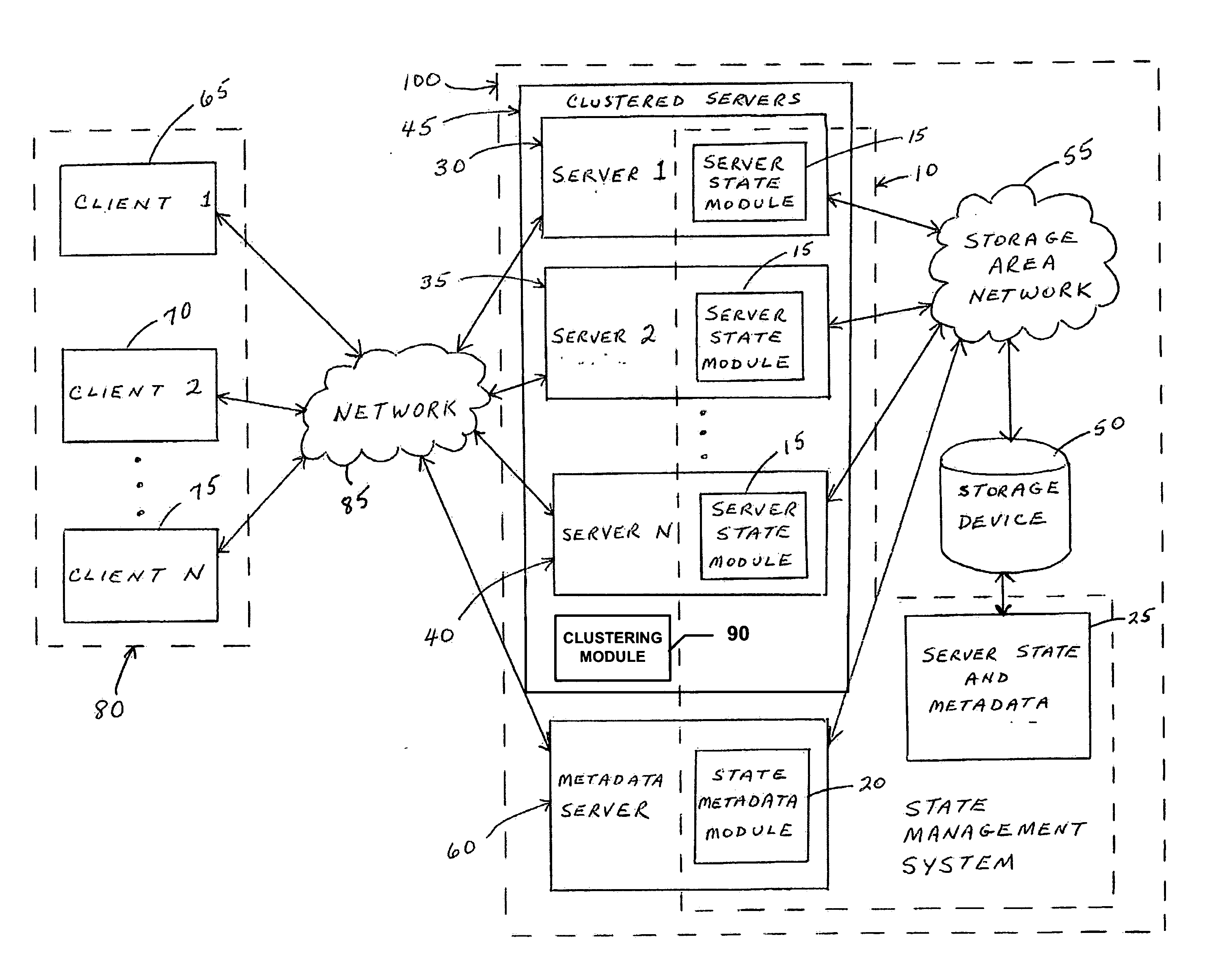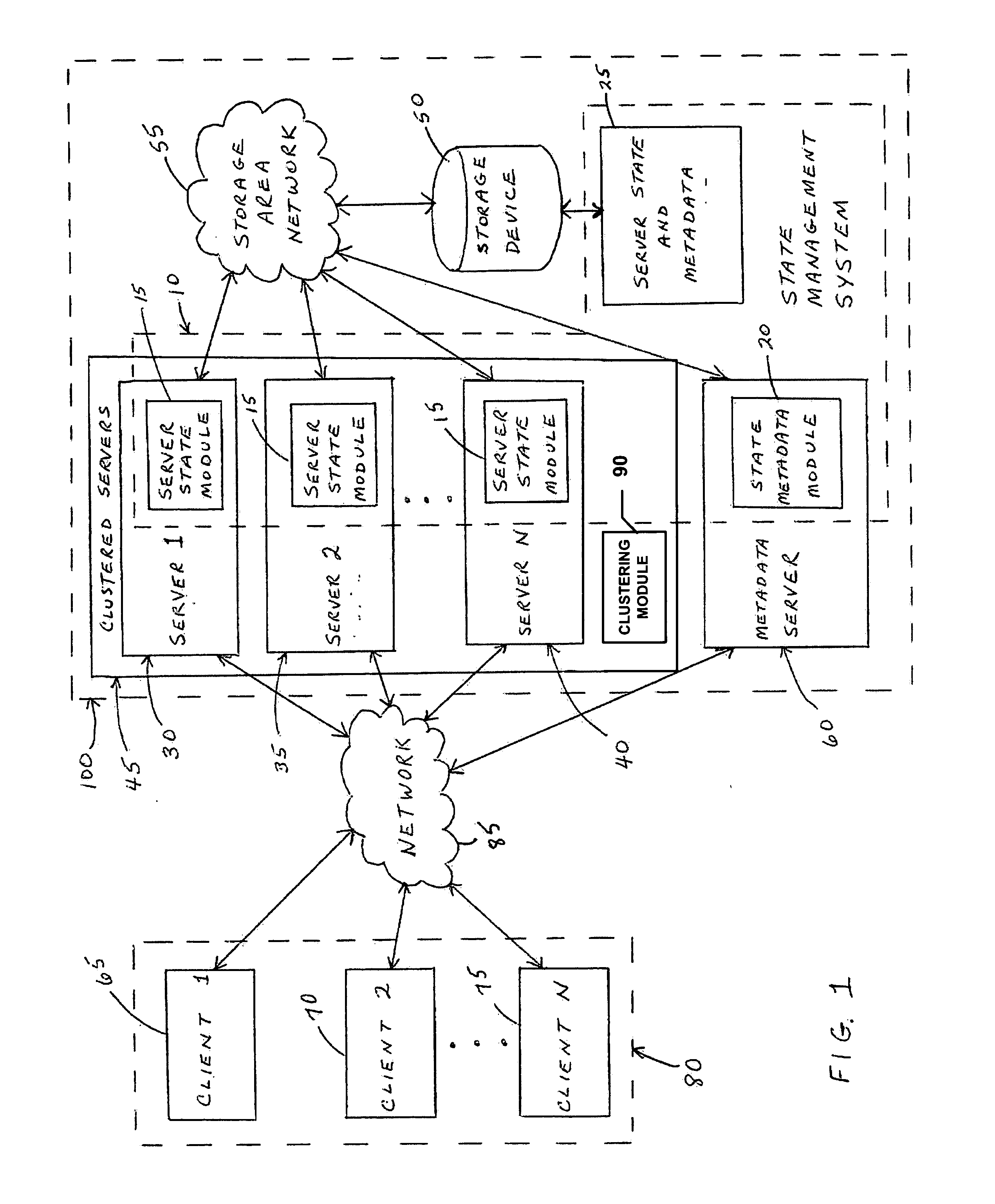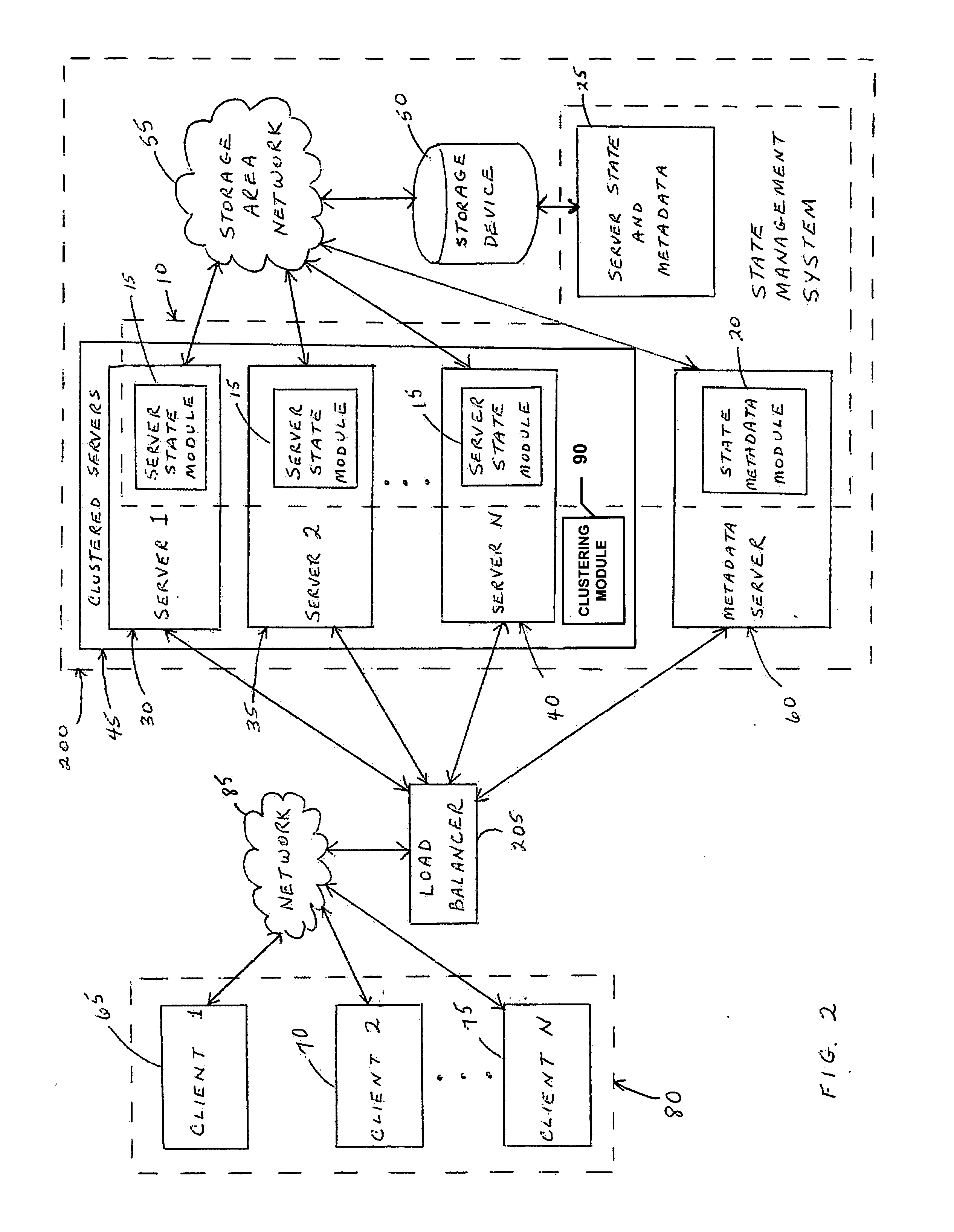System and method for preserving state for a cluster of data servers in the presence of load-balancing, failover, and fail-back events
a data server and cluster technology, applied in the field of cluster file systems, can solve the problems of network overhead, failure-tolerant file and record locking features supported by those protocols do not work well, and achieve the effect of improving efficiency and simplicity
- Summary
- Abstract
- Description
- Claims
- Application Information
AI Technical Summary
Benefits of technology
Problems solved by technology
Method used
Image
Examples
Embodiment Construction
[0027] The following definitions and explanations provide background information pertaining to the technical field of the present invention, and are intended to facilitate the understanding of the present invention without limiting its scope:
[0028] Fail-back: Transfer of operations back to a machine that recovered after a failure from the machine in the cluster that replaced it after the failure. Transfer of operations comprises functionality, clients, and state of the recovered machine.
[0029] Failover: Transfer of operations of a failing machine in a cluster to another machine in the cluster. Transfer comprises the functionality, clients, and state of the failing machine.
[0030] Load Balancing: Distributing work requests among all the machines in the cluster such that all the machines get an even share of the work
[0031]FIG. 1 illustrates an exemplary high-level architecture of a shared storage database 100 comprising a state management system 10 (the “system 10”). System 10 comp...
PUM
 Login to View More
Login to View More Abstract
Description
Claims
Application Information
 Login to View More
Login to View More - R&D
- Intellectual Property
- Life Sciences
- Materials
- Tech Scout
- Unparalleled Data Quality
- Higher Quality Content
- 60% Fewer Hallucinations
Browse by: Latest US Patents, China's latest patents, Technical Efficacy Thesaurus, Application Domain, Technology Topic, Popular Technical Reports.
© 2025 PatSnap. All rights reserved.Legal|Privacy policy|Modern Slavery Act Transparency Statement|Sitemap|About US| Contact US: help@patsnap.com



